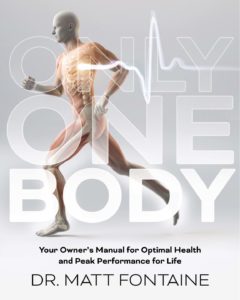10 Jul There is no such thing as cardio
For decades many people have been on the long slow ride to nowhere. Long hours of running on the treadmill or outdoors, long sessions on elliptical trainers, stationary bikes, cycling outdoors. For many, these “cardio” sessions are a staple of their exercise regimen. Many people believe that doing “cardio” sessions is the key to improving cardiovascular fitness and to maintaining a healthy weight. But the science shows is that high intensity resistance training can give us the same cardiovascular health, if not better, than these long and dreary workouts. And in a fraction of the time. A side note for the endurance athlete: Someone training for a half marathon distance or full, or a half Ironman distance or full IM is going to need to put the time in running, or swim, bike and run training. For these athletes, the high intensity resistance training should be a staple during the off-season. Adding high intensity intervals into your swim, bike and run workouts both in the off-season and during the competitive season is a sure fire way to increase your lactate threshold, optimize your body’s ability to utilize oxygen and optimize your cardiovascular output, allowing you to go faster longer. Most of the professional and elite athletes and coaches are already utilizing high intensity intervals mixed in with longer based training. What is high intensity resistance training and why does it work? HIIT an exercise strategy alternating periods of short intense anaerobic (without oxygen) with less-intense recovery periods. Workouts typically last between 4 -30 minutes. They are believed and research supports to improve cardiovascular fitness and glucose metabolism and fat burning. Likely one of the most well known forms of interval training is Tabata intervals. Developed during a 1996 study, Professor Izumi Tabata, these workouts utilize 20 seconds of ultra-intense exercise (at an intensity of about 170% of VO2max) followed by 10 seconds of rest, repeated continuously for 4 minutes (8 cycles). The benefits of HIIT include: increases the resting metabolic rate (RMR) for the following 24 hours due to excess post-exercise oxygen consumption, and may improve maximal oxygen consumption (VO2 max) more effectively than doing only traditional, long endurance workouts. Long endurance workouts have been touted to be the best way to burn fat because it is thought that fat becomes the primary fuel source after 30 minutes of exercise. HIIT has been shown to increase metabolic resting rate, lowers insulin resistance, and causes skeletal muscle adaptations that result in enhanced skeletal muscle fat oxidation and improved glucose tolerance 3,4 To get technical, 5′ AMP-activated protein kinase or AMPK or 5′ adenosine monophosphate-activated protein kinase is an enzyme that plays a role in cellular respiration, the production of energy for the body. It is found in the liver, brain, and in skeletal muscle. It has several functions. One of the effects of AMPK activation is stimulation of hepatic fatty acid oxidation (fatty acid metabolism consists of breakdown, catabolic processes that generate energy and primary metabolites from fatty acids, and anabolic processes that create biologically important molecules from fatty acids and other dietary sources). AMPK also stimulate ketogenesis ( ketone bodies are produced by mitochondrial cells of the liver in response to unavailability of blood glucose) This is caused by low glucose levels in the blood, after exhaustion of cellular carbohydrate stores after exercise, such as glycogen . Synthesis of ketones can also occur due to excessively high levels of blood glucose that are unable to be stored as glycogen in liver and muscle, as may be the case inn diabetes or insulin resistance. The production of ketone bodies is then initiated to make available energy that is stored as fatty acids. AMPK also results in inhibition of cholesterol production, lipogenesis and triglyceride synthesis ( a process whereby energy can be stored in the form of fat. Triglyceride synthesis is a separate pathway in which fatty acids are combined with glycerol to form fat. This process occurs in the liver and these fats are secreated from the liver in the form of VDL, very low density lipoproteins. VDL’s transport these fats to the peripheral tissues for storage. This is why on a blood workup for cholesterol and lipid profile, you want VDL to be low. AMPK is also responsible in part for the inhibition of adipocyte lipolysis and liopgenesis. Increased fat storage in adipose and non-adipose tissue (e.g. skeletal muscle) characterizes the obese insulin resistant state. Disturbances in pathways of lipolysis may play a role in the development and maintenance of these increased fat stores. 1 So high intensity interval exercise can improve how your body metabolizes fat for energy. AMPK also is responsible for stimulation of skeletal muscle fatty acid oxidation and muscle glucose uptake, and modulation of insulin secretion by pancreatic beta-cells. That is to say, using fatty acids for energy to fuel muscle activity, enhancing glucose uptake into muscle tissue for use in producing energy, and regulating the amount of insulin produced by the pancreas.
References: 1. Jocken JW, Blaak EE Catecholamine-induced lipolysis in adipose tissue and skeletal muscle in obesity. Physiol Behav. 2008 May 23;94(2):219-30. doi: 10.1016/j.physbeh.2008.01.002. Epub 2008 Jan 11 2. Paoli A High-Intensity Interval Resistance Training (HIRT) influences resting energy expenditure and respiratory ratio in non-dieting individuals. J Transl Med. 2012 Nov 24;10:237. doi: 10.1186/1479-5876-10-237 3. Tremblay A, Simoneau JA, Bouchard C (1994). “Impact of exercise intensity on body fatness and skeletal muscle metabolism”. Metabolism: Clinical and Experimental 43 (7): 814–8. 4. Boutcher SH (2011). “High-intensity intermittent exercise and fat loss”. Journal of Obesity 2011: 868305.




